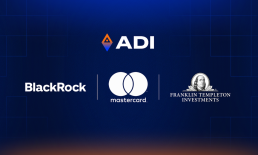Lead, follow or get out of the way — that seems to apply to the rise of Open Banking, which promises more financial services innovation, along with greater financial transparency and flexibility. While nothing is inevitable, and even the best plans are always in danger of stalling out or being derailed, the energy behind Open Banking is gaining steam.
The latest evidence of that comes from Mastercard.
On Tuesday (June 4), the payment card network launched its latest initiative centered around the changes, a program called Open Banking Solutions. In a new PYMNTS interview, Jim Wadsworth, SVP of Open Banking at Mastercard, spoke with Karen Webster about how the program fits within the larger context of Open Banking, and what’s coming next.
Open Banking Phenomenon
Much of the success of Open Banking depends on education and awareness. “It’s a hugely important phenomenon in the industry,” Wadsworth said. “We are being asked by customers from banks and elsewhere for advice and help in terms of making Open Banking a successful outcome for all companies.”
The promise of Open Banking — still far off, but certainly in sight — is that individuals will have greater control over how and where their data is used, by whom and when. Technology, of course, stands as a vital part of the overall effort. Open Banking, which launched in the U.K. in early 2018, depends on open application programming interfaces (APIs), which allow trusted third-party developers to build services for financial institutions. The APIs are used to share bank data among various financial industry players, and should, ultimately, spur competition and new product development that benefits the end user.
Advertisement: Scroll to Continue
To that end, the new Mastercard offering is designed to support Open Banking efforts in four areas: connectivity, security and compliance, dispute resolution and consulting services. The service is, for now, focused on the U.K. and Poland (underscoring how Europe and its regulators led the push for Open Banking and the associated PSD2 regulatory regime), and includes several payment and financial service partners, including Alior Bank and Kikapay. The goal is to build a suite of innovative Open Banking services, according to Mastercard, along with relevant standards, clarity and consistency.
After all, building a strong foundation for Open Banking is key to crafting innovations later. As Wadsworth told Webster, giving customers more “control over data in bank accounts, and who gets access to that data, we think that will increasingly become the normal way we interact with our money. It’s a massive strategy change in the industry.”
Role Of Trust
Making sure that change happens — that reality meets the promise — will require a good deal of trust, to put it mildly. With new players becoming more deeply involved in some of the most intimate consumer relationships out there (the relationship between consumers and their financial institutions), secure, reliable connections are vital, which is part of the new Mastercard push. In addition, dispute resolution will have an importance that’s hard to underplay.
“There will be problems,” Wadsworth said. “It will be nice if things go right the first time, but we all know that’s not going to be the case.”
As with all new efforts, some aspects will fail, leading to lessons learned, guiding best practices. That’s why, according to Wadsworth, Mastercard is in “active consultation with banks and others” to come up with a consensus view of dispute resolution, as Open Banking gains even more energy. That said, the involvement of those trusted third-party developers in innovations enabled by Open Banking will provide the opportunity to build what he called “fingerprints” of those third parties — one way to keep participants accountable, and to better learn from the inevitable mistakes.
For instance, a third party that starts to deal in “dramatically different transaction amounts” is going to set off a digital or manual flag, he pointed out.
Consumer Education
Right now, of course, Open Banking is a work in progress, with Mastercard receiving inquiries about it from various angles — such as “what does this mean for me?” Wadsworth said, or how to best adopt it at this point in time. That will also make consumer education and awareness vital.
Much of what Open Banking means — or will come to mean — remains pretty abstract, at least to the mainstream consumer. However, when one breaks it down in the right way, Wadsworth said, progress can be made toward deeper understanding. One might tell a customer that, under the new rules and landscape, applying for a loan might involve three digital buttons and “six seconds” for the approval process to run its course, instead of frustrating paperwork and more time.
“That gets people’s attention,” he said.




